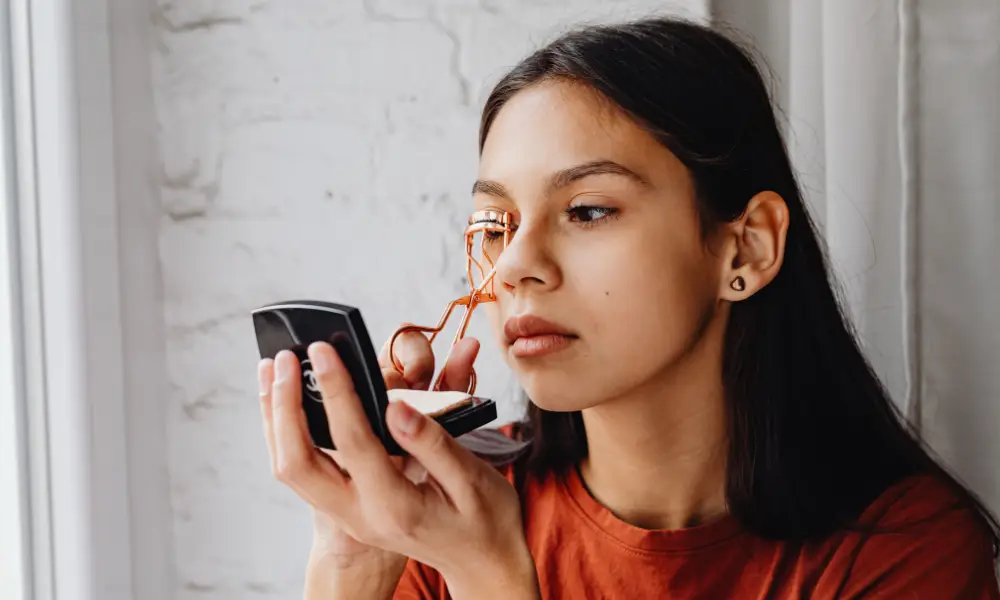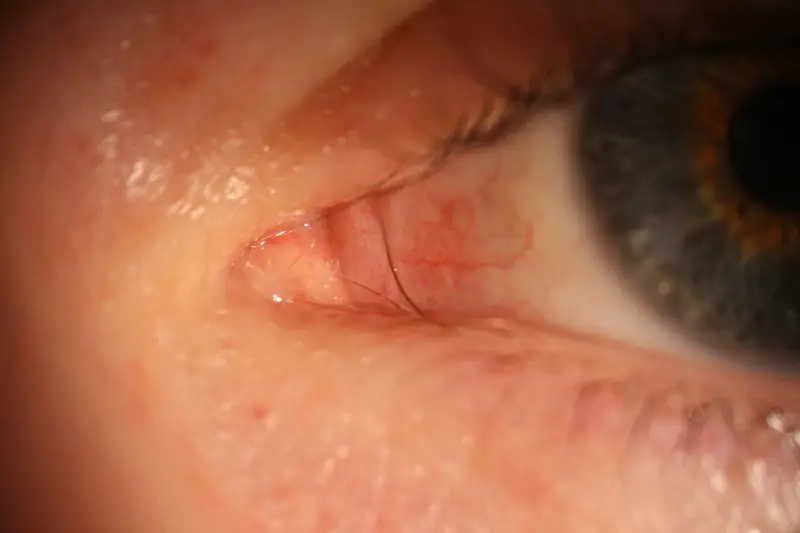Ever felt a nagging irritation in your eye only to find out it’s an ingrown eyelash? It’s not just annoying—it can be downright painful! In this blog, we’re going to uncover everything you need to know about ingrown eyelashes. From understanding why they happen to explore simple ways to get rid of them, we’ve got you covered.
Let’s dive in and learn how to tackle those troublesome lashes.
Contents
Understanding Ingrown Eyelashes
Ingrown eyelashes, medically known as trichiasis, occur when eyelashes grow inward toward the eye instead of outward. This abnormal growth can cause the lashes to rub against the cornea (the clear front surface of the eye) or the conjunctiva (the thin, moist area covering the white part of the eye and the inner eyelids).
When eyelashes grow inward, they can lead to a range of uncomfortable and potentially harmful symptoms. The constant contact between the eyelashes and the eye surface can cause irritation, redness, tearing, and a gritty feeling in the eye, much like having sand in the eye. If not addressed, ingrown eyelashes can lead to more serious issues, such as scratches on the cornea, infections, or even vision impairment due to damage to the delicate structures of the eye.
Common Causes of Ingrown Eyelashes
Ingrown eyelashes can be caused by a variety of factors, each contributing to the abnormal growth direction of the lashes. Here are some of the most common causes:
- Chronic Inflammation: Persistent inflammation of the eyelid can alter the natural growth pattern of eyelashes.
- Eyelid Trauma: Injury to the eyelid may disrupt the follicle orientation, causing lashes to grow inward.
- Blepharitis: This condition, characterized by inflammation of the eyelid margins, often leads to eyelash disorders.
- Dermatitis: Skin conditions affecting the eyelid, like eczema or seborrheic dermatitis, can contribute to misdirected eyelash growth.
- Infections: Eyelid infections, including viral and bacterial, can damage the eyelash follicles.
- Scarring: Scarring from burns, surgery, or infections can cause the eyelid to contract and pull lashes inward.
- Aging Changes: As people age, changes in eyelid anatomy can lead to eyelashes turning inward.
- Ocular Rosacea: This subtype of rosacea affects the eyes and can lead to eyelid inflammation and eyelash problems.
- Genetic Factors: In some cases, genetic predispositions may play a role in the development of ingrown eyelashes.
Identifying the underlying cause is key to selecting the appropriate treatment and preventing recurrence of this uncomfortable condition.
Symptoms of Ingrown Eyelashes
If you’re experiencing ingrown eyelashes, you might notice the following symptoms:
- Irritation: A constant feeling of discomfort in the eye.
- Redness: Visible redness around the eyelid or the eye itself.
- Pain: An aching or sharp pain in the eye.
- Tearing: Excessive watering of the eye.
- Sensitivity to Light: Difficulty tolerating bright lights.
- Blurred Vision: Slight to moderate blurring of vision if the cornea is affected.
- Foreign Body Sensation: The feeling that something is constantly in the eye.
- Swelling: Swelling of the eyelid due to irritation or infection.
Recognizing these symptoms early can help you seek timely treatment and avoid complications associated with ingrown eyelashes.
How Do You Get Rid of an Ingrown Eyelash?

Removing an ingrown eyelash involves a few different methods, depending on the severity and recurrence of the condition. Here are the most common approaches to effectively deal with ingrown eyelashes:
- Manual Removal: For immediate relief, a doctor can manually remove the offending eyelash using fine-tipped tweezers under sterile conditions. This provides quick relief but may need to be repeated if the eyelash regrows in the same manner.
- Electrolysis: This method uses a fine needle and an electrical current to destroy the hair follicle permanently. Electrolysis is effective in preventing the eyelash from growing back and causing further irritation.
- Cryotherapy: Involving the application of extreme cold to destroy the abnormal eyelash follicles, cryotherapy is another permanent solution to prevent regrowth of ingrown eyelashes.
- Laser Treatment: Laser can be used to target and destroy the hair follicles, preventing future growth of ingrown eyelashes. This method is precise and less invasive, offering a long-term solution.
- Surgical Correction: In cases where ingrown eyelashes are caused by eyelid abnormalities, surgical procedures to correct the eyelid position may be recommended. This can help prevent future problems with ingrown eyelashes.
Home Remedies to Manage Ingrown Eyelashes

- Warm Compresses: Applying a warm compress to the affected eye can help soften the eyelids and promote natural drainage of any blocked oil glands. Use a clean, warm cloth and apply it gently to the closed eyelid for about 5 to 10 minutes several times a day.
- Eyelid Hygiene: Maintaining clean eyelids can prevent further issues with ingrown eyelashes. Use a gentle, hypoallergenic baby shampoo or a commercially available eyelid cleanser. Dilute the shampoo with warm water, apply it to a clean washcloth, and gently scrub the eyelids to remove debris and excess oils.
- Massage the Eyelids: Gently massaging the eyelids after applying a warm compress can help encourage the proper growth of the eyelashes. Use clean fingers to massage the lid in circular motions lightly.
- Avoid Makeup: If you’re experiencing issues with ingrown eyelashes, it’s best to avoid eye makeup until the condition improves.
- Keep Hands and Towels Clean: Ensure that anything that comes into contact with your eyes, such as hands and towels, is clean to avoid introducing or spreading infection.
- Artificial Tears: Over-the-counter lubricating eye drops can help relieve irritation and dryness caused by ingrown eyelashes, making the eye feel more comfortable.
Is It Safe To Pluck an Eyelash?
Plucking an eyelash can seem like a quick fix to discomfort, but it’s important to consider the safety and potential risks involved.
- This is a temporary solution as the eyelash will eventually grow back, potentially in the same ingrown direction.
- The main concern with plucking eyelashes is the risk of introducing bacteria into the eye area, which can lead to infections.
- Improperly plucking an eyelash can damage the hair follicle or the eyelid skin.
- If not done correctly, plucking can cause the eyelash to grow back incorrectly, potentially leading to recurrent issues with ingrown eyelashes.
Because of these risks, it is generally safer and more advisable to seek help from a professional, such as an ophthalmologist or an optometrist, if an ingrown or problematic eyelash is causing discomfort.
Conclusion
Dealing with ingrown eyelashes can be more than just annoying—it can be harmful to your eye health if left unaddressed.
If you’re experiencing persistent eye discomfort or suspect you have ingrown eyelashes or any other eye-related issues, don’t wait for the symptoms to worsen. Visit the Best Eye Hospital in India where our experts are ready to provide you with comprehensive eye care tailored to your needs. Book your free appointment today by calling us at +91 9711116605.
